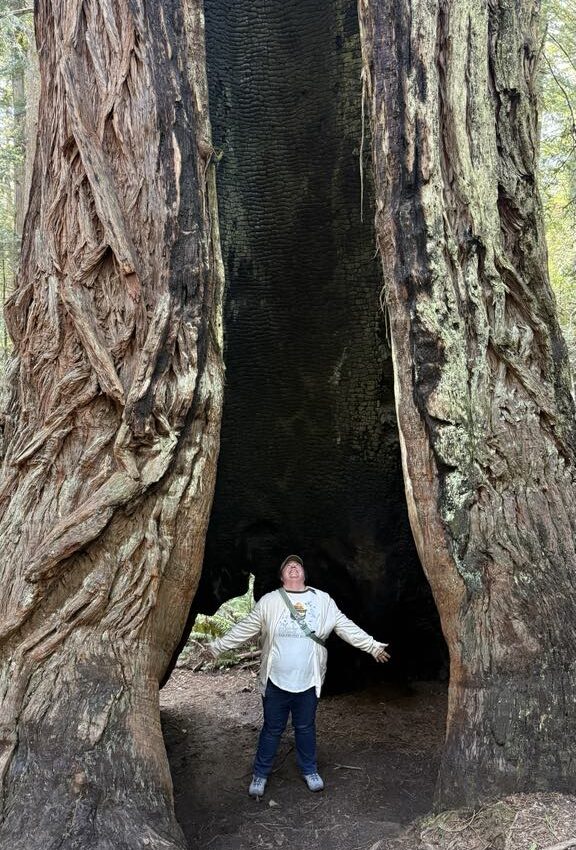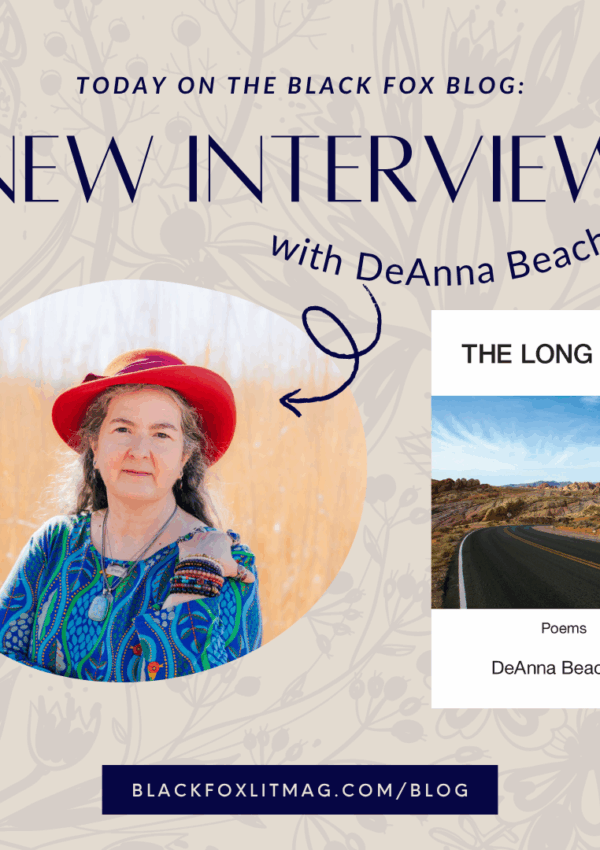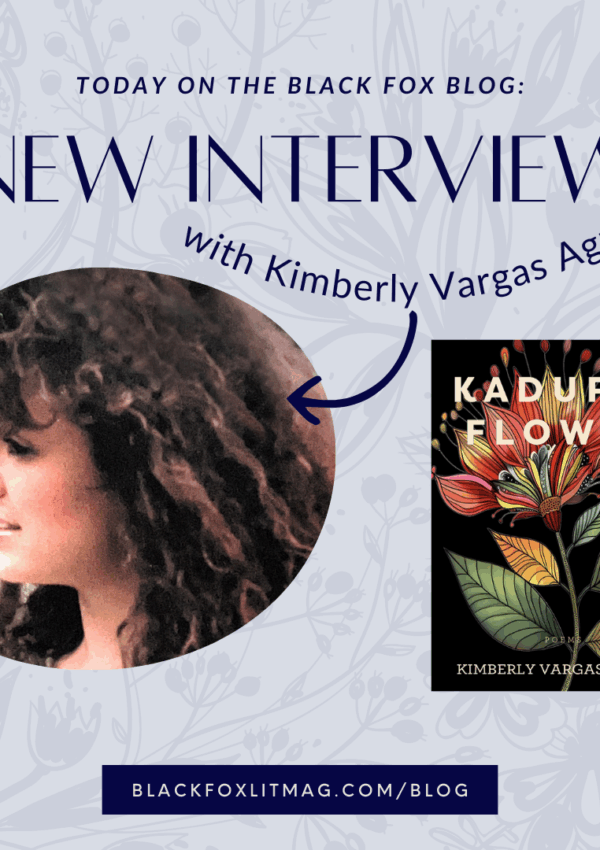An interview by Alicia Cole.
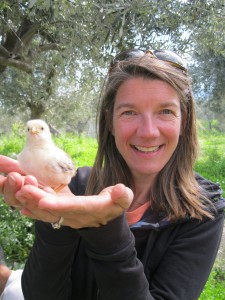 Kate Samworth grew up in the DC area, where she played bass in a band and made art before moving to New Orleans. She studied and then taught painting at the New Orleans Academy of Fine Art and later earned a BFA from the Pennsylvania Academy of Fine Art. Her work has been exhibited across the US and abroad and won numerous awards. Samworth’s art reflects her interests in story-telling, ecology, and art history. The landscapes in her paintings are informed by her travels to Brazil, Spain, and Turkey. She is particularly interested in what the history of art reveals about our evolving understanding of the natural world. Her first illustrated book, Aviary Wonders Inc., won the first Kirkus Prize for Young Readers.
Kate Samworth grew up in the DC area, where she played bass in a band and made art before moving to New Orleans. She studied and then taught painting at the New Orleans Academy of Fine Art and later earned a BFA from the Pennsylvania Academy of Fine Art. Her work has been exhibited across the US and abroad and won numerous awards. Samworth’s art reflects her interests in story-telling, ecology, and art history. The landscapes in her paintings are informed by her travels to Brazil, Spain, and Turkey. She is particularly interested in what the history of art reveals about our evolving understanding of the natural world. Her first illustrated book, Aviary Wonders Inc., won the first Kirkus Prize for Young Readers.
Black Fox Literary Magazine: When and why did your creative vision progress from painting to publishing?
Kate Samworth: I had many years of fantasy and then a stroke of luck. I had always thought about being an illustrator because my paintings had always been illustrative. I was trying to draw pictures for some of my favorite short stories, but it seemed like the author had control of all the imagination and the world was already created. I didn’t want to paint within those boundaries. I didn’t want to work as an illustrator. It seemed like I wouldn’t be able to use my imagination. While I now know this isn’t true, as a novice it seemed like the author had all the creative control.
I had an intent to create these aviary books, a series of ten I was going to bind by hand, and had already started, but after speaking with a teacher after taking the first course in illustration that the Philadelphia Academy of Fine Art has offered since, I believe, the 60’s, I was introduced to the publishing world and told what I needed to know in order to be published, so I went this route and not the by hand route.
BFLM: What major and minor differences have you found in these fields in terms of creative production, if any?
KS: I’m too new to answer that. I thought the other nine copies, the ones I didn’t submit to my now editor, would stay under my bed.
First, I had to make the book kid friendly. My editor had great suggestions such as showing less realistic ways to illustrate the connections of the bird’s body; the illustration where the legs are attached to the hip, for example, was too gruesome originally, too dark for children. I found I liked it becoming more light-hearted. You learn to work with your editor, you learn which changes you keep and which ones you change while keeping your creative integrity. My editor helped me make it a much stronger book.
It was a lot more fun than I thought it would be because I found the right editor. She totally understood the humor of the book and helped me keep the voice of the founder consistent throughout, and helped me shape it better. She never had to tell me exactly what to say, but she helped me understand how to keep the catalogue consistent. It’s funny when you’re used to working in solitude, it’s new to take your ego out of the way and understand that someone else has a better idea of your work than you do.
BFLM: Aviary Wonders Inc. hits so many pertinent topics: human creativity vs. human destruction, humanity’s need to control the environment, ecological sensibilities, extinction, education–what do you hope individuals take away after reading?
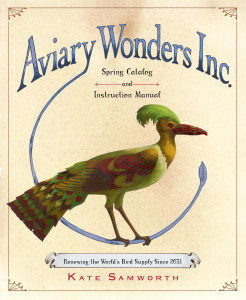 KS: I have been involved in different environmental movements over the years. I would say the best way to get people to listen is through humor. In order to help birds, I need to help people learn how to see, instead of making them feel a certain way. This book may not appeal to someone who’s not into birds. I hope that someone that’s never thought about birds and the environment can make a personal connection with this book. Showing is different from telling.
KS: I have been involved in different environmental movements over the years. I would say the best way to get people to listen is through humor. In order to help birds, I need to help people learn how to see, instead of making them feel a certain way. This book may not appeal to someone who’s not into birds. I hope that someone that’s never thought about birds and the environment can make a personal connection with this book. Showing is different from telling.
I hope that the book gets people thinking about how our everyday choices impact an ecosystem.
Really the concept is more about us thinking we can replace birds; changes to technology will fix the problem, so we don’t have to do anything. This book came in light of Hurricane Katrina and the loss of habitats and populations. It’s a response to the idea of technology solving our problems. We have to solve them ourselves.
BFLM: What age ranges have you reached with this work? What differing responses have you received based on age range? Anything that stands out from the younger generations who really “get it”?
KS: It’s interesting, I’ve reached more younger kids than anticipated. They don’t really get the environmental message. They just like to make the birds.
The kids are having fun; they don’t really know whether they can order the birds or not. The ambiguity is as much fun as anything.
If I’m doing a presentation and not an art class afterwards, then I don’t tell them whether the birds can be ordered or not. They can puzzle it out themselves and they’ll learn more this way through their own research and reading. I don’t want to tell them what’s real–that’s up to their teachers and parents. I want them to just enjoy the moment. I think if I was a kid, I’d just want to enjoy the fantasy and wonder.
I don’t know that I’ve met any kids who really “get it.” I’ve met plenty of kids who’ve studied the environment and environmental issues. What I don’t think they get is our reliance on technology. I think they don’t exactly get the satire that this man is trying to capitalize on environmental loss and our reliance on science to fix it. The general impression I get is that kids seem excited by someone being able to make a bird versus saddened by it.
Art and science teachers really appreciate it, and there are so many bird books it would be easier for kids to take this further.
BFLM: Where are you planning to go next?
KS: I’m writing a story about art. It’s a fairy tale that involves art. I haven’t shown it to my editor yet. I hope to turn it in in a month so I won’t say anything else about that. It’s not about the environment as I’m hoping to take a break from environmental research.
I’ve always done writing as a hobby and now I feel committed to finishing some of the stories I’ve started. It’s been a lot of fun and a huge learning curve.
BFLM: If humanity could engineer one mechabioorganism in the future, what would you hope to see? Keeping extinction out of the picture, hopefully; this is fantasy time!
KS: I wouldn’t, honestly. I really wouldn’t. That’s part of my book, a response to science. I mean, okay, if we’re talking about helping people with medicine I’m excited about the developments we’re making, but when I see agricultural changes and us throwing ourselves blindly into it, that concerns me. I’m very sad to think we’d have to create animals. That doesn’t excite me.
BFLM: In terms of you personally and humanity’s future, what are you hoping to see?
KS: I don’t think elections are going to solve our problems but there are an increasing number of people hoping to solve our problems. We need to act quickly and talk about conservation. Conservation should be our priority, instead of economic growth. We have enough; those of us who are consuming probably already have enough. My hope is that we’ll consume less and talk about conservation more.
Alicia Cole: My hope is that this generation will understand what we’re doing to the environment and what they can do to help make positive change.
KS: And how much power they have to protect their environment.
